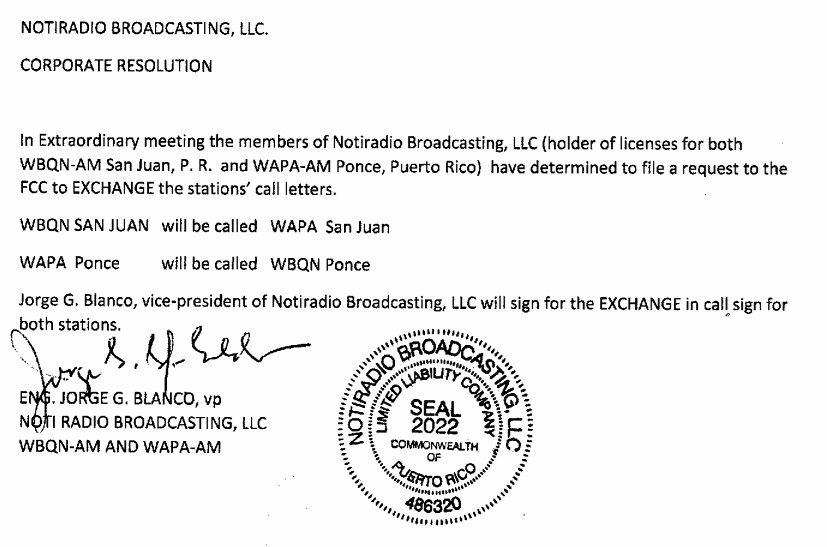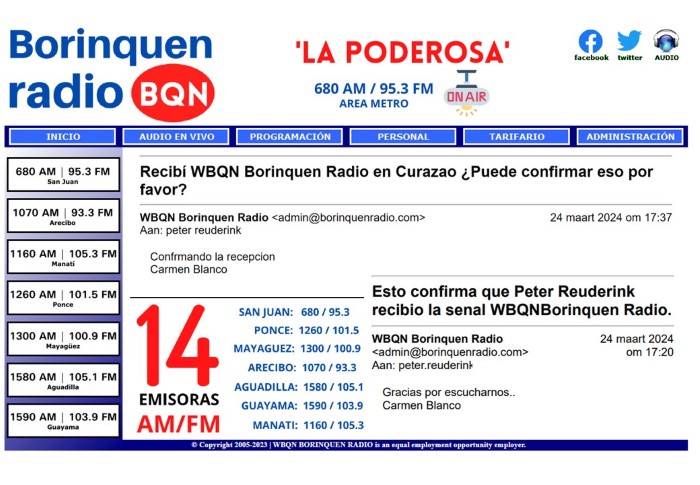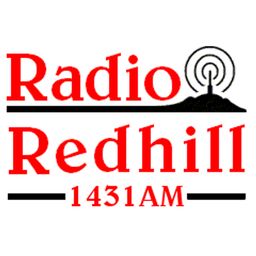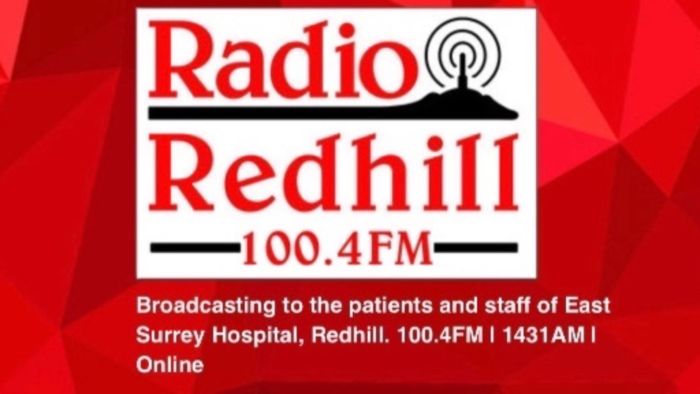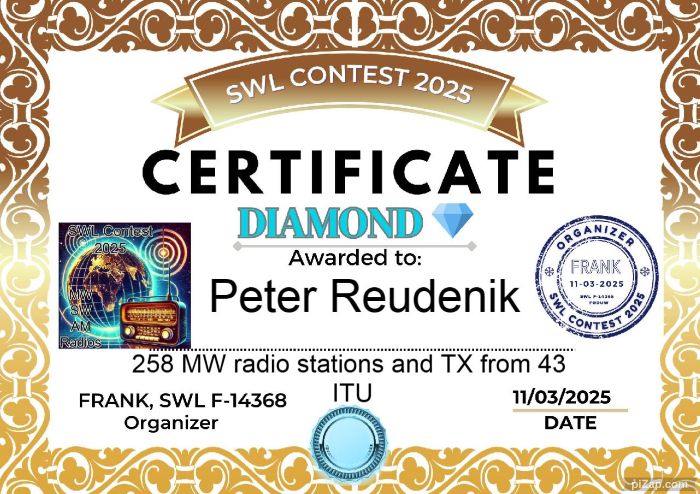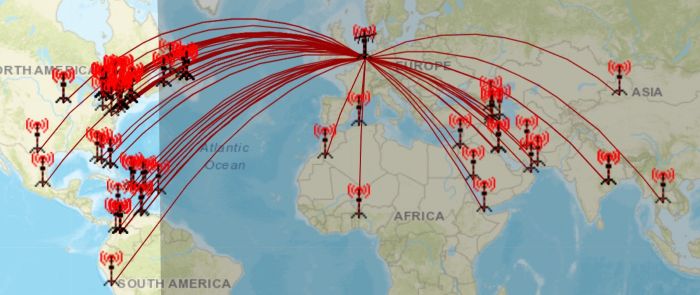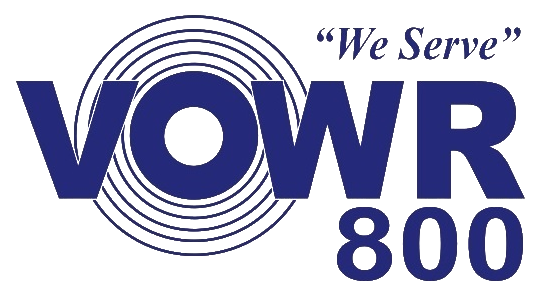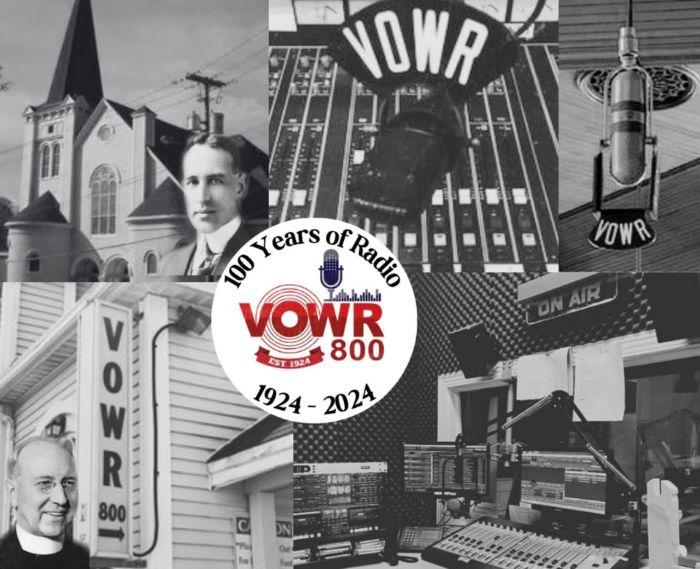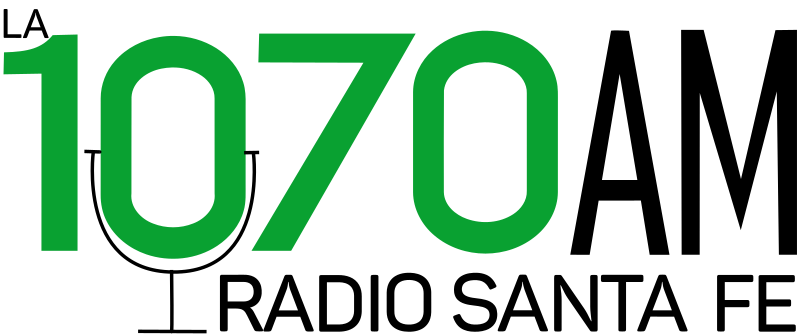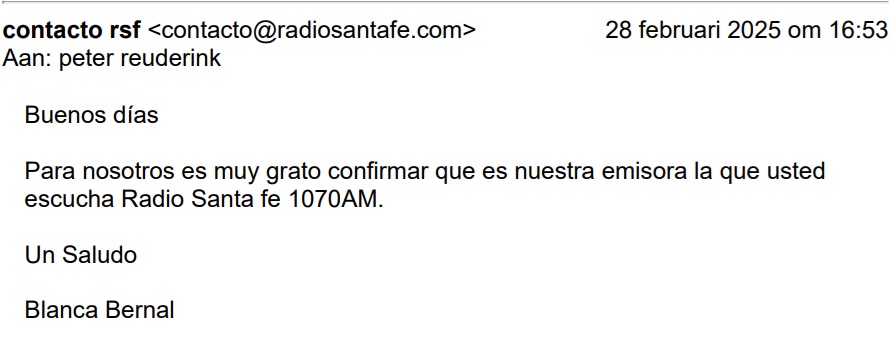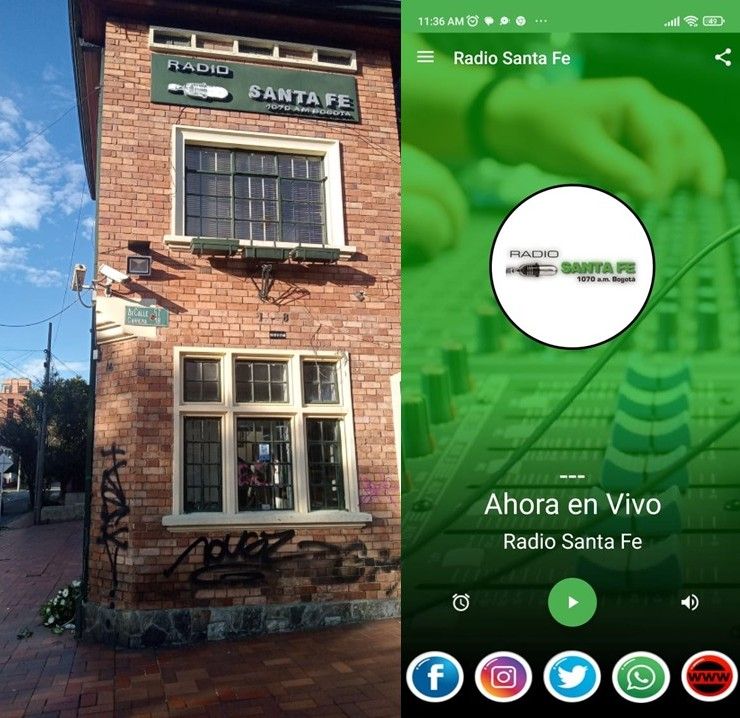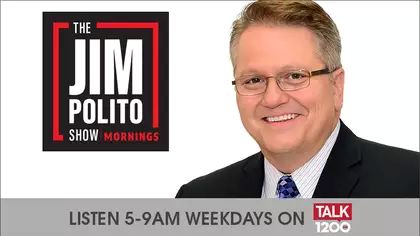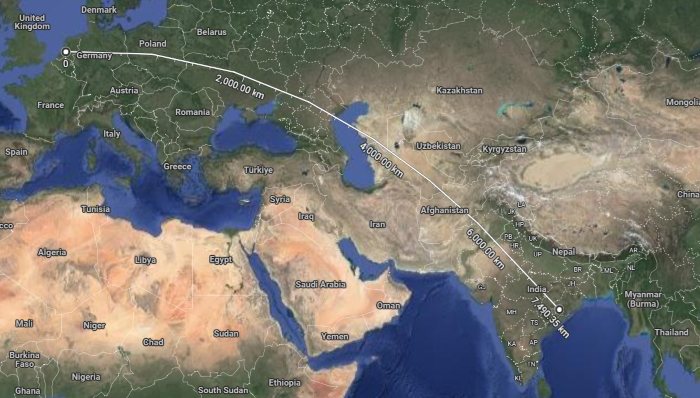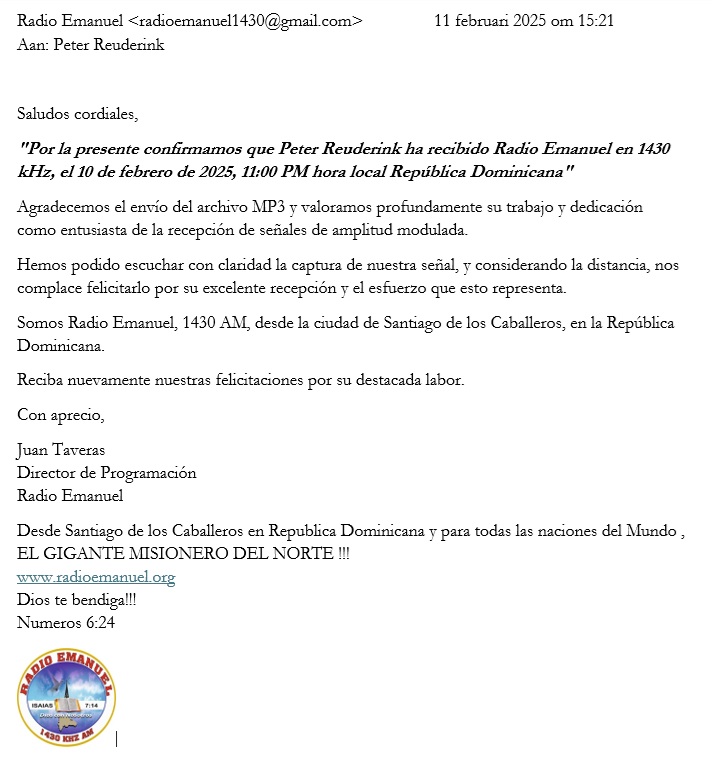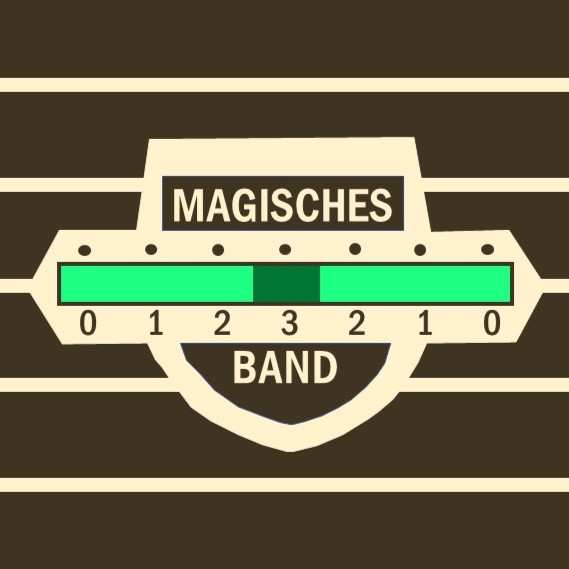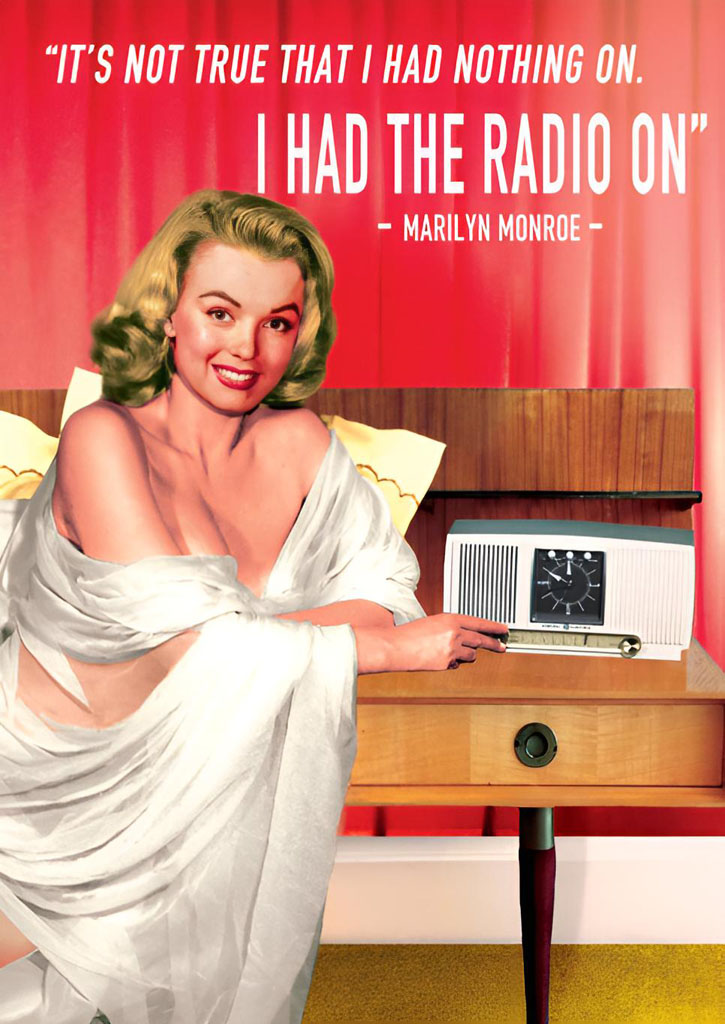A QSL for WXRF WAPA Radio Guayama, Puerto Rico on 1590 kHz. The station is part of the WAPA Radio network. My report to admin@borinquenradio was answered within a day with a brief email reply from ING Jorge Blanco, vice president of WAPA Radio. I heard this station while staying on the island Curacao (721 km distance).

WXRF is part of the WAPA Radio network which operates 7 AM and 7 FM stations across the island of Puerto Rico. It is interesting to see that the email address still reads WBQN which was the call sign of the station on 680 AM which I QSL-ed last year (see below). At the time the network was branded Borinquen Radio, with “Borinquen” referring to the native name for Puerto Rico.
Things have changed over the past year. WBQN on 680 AM, the most powerful station of the network, has its old call sign WAPA back since October 2024. And the network is now called WAPA Radio network. WAPA refers to original owners, the Asociación de Productores de Azúcar, or Puerto Rico Sugar Grower’s Association.
The WBQN call sign now belongs to the station on 1580 kHz by the way.
